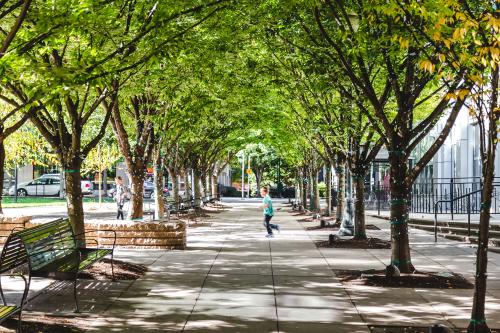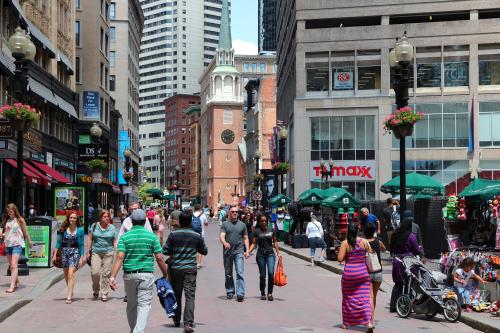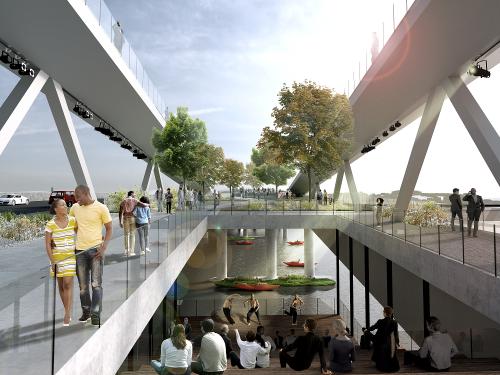Late last week, the Atlantic published a somewhat provocative piece, “The Future of the City is Childless.” The article presents demographic data on the declining number of children in high-density cities like San Francisco, Seattle, and Washington, D.C., noting that in these cities, the fastest growing group is wealthy, college-educated whites without children, while families with children older than six are on the decline.
The article points to the very real and pressing concerns facing many of today’s “superstar” cities—the rise of urban “workism” that favors capital and profit over family, the high and increasing costs of urban living, neighborhoods catering to millennial tastes for lattes and brunch spots over other amenities and services, and the simple fact that raising a kid in a city can be hard. Millennial preferences for having (or not having) children aside, these concerns point to deeply embedded inequities that divide our cities—inequities that have enabled many urban places to become playgrounds for the highly educated childless set, while low income families are given the distinct message: this place is not for you.
The article is spot on when it comes to diagnosing the problems but falls short on what to do next. It somewhat halfheartedly raises the need for more affordable housing to help keep families put, but ultimately reaches to a more deterministic conclusion: “America’s rich cities specialize in the young, rich, and childless; America’s suburbs specialize in parents. The childless city may be inescapable.”
Is it really inescapable? The short answer is no. But avoiding such a fate requires a lot more than convincing new millennial parents to stick around post-preschool. Rather, it demands deep, intentional efforts to grow inclusive cities that provide all families, including those at the margins, an opportunity to raise their children in a safe, affordable, and amenity-rich neighborhood.
Creating family-friendly cities with equity at their core
As the article points out, the macro-implications of these increasingly “childless cities” are many: They further reinforce a winner-take-all geography, in which a handful of cities amass increasing shares of wealth while others fall behind; they discourage people from having kids, the long-term societal ramifications of which are manifold; and they fuel the country’s urban-rural divide, whereby economic power is concentrated in large, successful cities, while electoral power is biased towards low-density areas.
But it’s not enough to assert these warnings and call it a day. To combat inequities among people, places, and economies, we must look to innovative, place-based strategies aimed at creating cities where families of all means not only can afford to live, but where they can thrive.
As the article briefly mentions, cities no doubt need to increase affordability, starting with affordable housing. Moreover, cities cannot be sustainable for families without access to good jobs and transportation, childcare, a robust social safety net. To be sure, these are big challenges that require long-range, systemic solutions that seem to ever-defy political agreement and the will to actually execute. But while striving to achieve them, city and regional leaders, practitioners, and developers have other strategies at their disposal that can be aligned and scaled to create more inclusive family, friendly cities.
- Expand who urban amenities “are for”: The dominant narrative of urban change is almost a cliché: cities cater to educated workers preference for dense, walkable, and green neighborhoods, attract businesses who seek those employees, and ultimately become more economically successful. Yet as downtowns and other up-and-coming urban neighborhoods flourish, many communities—particularly black and Latino communities—lack access to opportunity and fundamental neighborhood amenities. To combat these inequities, cities can invest in efforts to build parks in low-income neighborhoods, to improve walkability in communities where the physical landscape has been distorted by historic inequities, and to connect low-income neighborhoods with fresh food, which together can lead toimproved public health outcomes, less violent crime, and lower rates of social isolation. While such investments can’t combat larger macroeconomic forces, when implemented to reflect the vision, values, and needs of communities, they can make urban living safer, healthier, and simply easier for families.
- Transform public spaces to promote youth development: Creating family-friendly urban places can be accelerated through the transformation of existing spaces into areas that promote learning and social interaction. Through our work on the Playful Learning Landscapes Project, Brookings is exploring efforts to transform everyday urban places—such as laundromats, bus stops, and vacant lots—into hubs for childhood education and development. By bringing question cards, story games, puzzle walls, and other interactive learning activities to previously mundane or vacant urban places, these efforts are not only targeting inequities in educational achievement across class-lines, but they are also enhancing public spaces in historically divested neighborhoods, improving the vitality of these places for families and children.
- Connect communities with dialogue and trust: As communities continue to be segregated by race and class, Americans are less inclined to trust those who are different from them. Urban development projects need to be cognizant of this sentiment (particularly its roots in a long history of residential segregation and in looming fears of displacement) and embrace the research that shows how social cohesion and integration across class, race, and cultural lines benefits children and families. Reimagining the Civic Commons is doing just this—piloting efforts in five cities to build inclusive neighborhood assets that encourage families from different backgrounds to connect and find a shared sense of place. The pilots are centered around the idea of communal ownership over, and pride in, urban places, and dissolving the divides that contribute to social isolation in urban communities.
Of course, these strategies alone can’t make a dent in the deeply embedded inequities that divide our cities. But when approached holistically, implemented at scale, and combined with concerted policy efforts to increase urban affordability, they can make cities more accessible and welcoming to every family.
The Brookings Institution is committed to quality, independence, and impact.
We are supported by a diverse array of funders. In line with our values and policies, each Brookings publication represents the sole views of its author(s).








Commentary
The future of the city doesn’t have to be childless
July 24, 2019